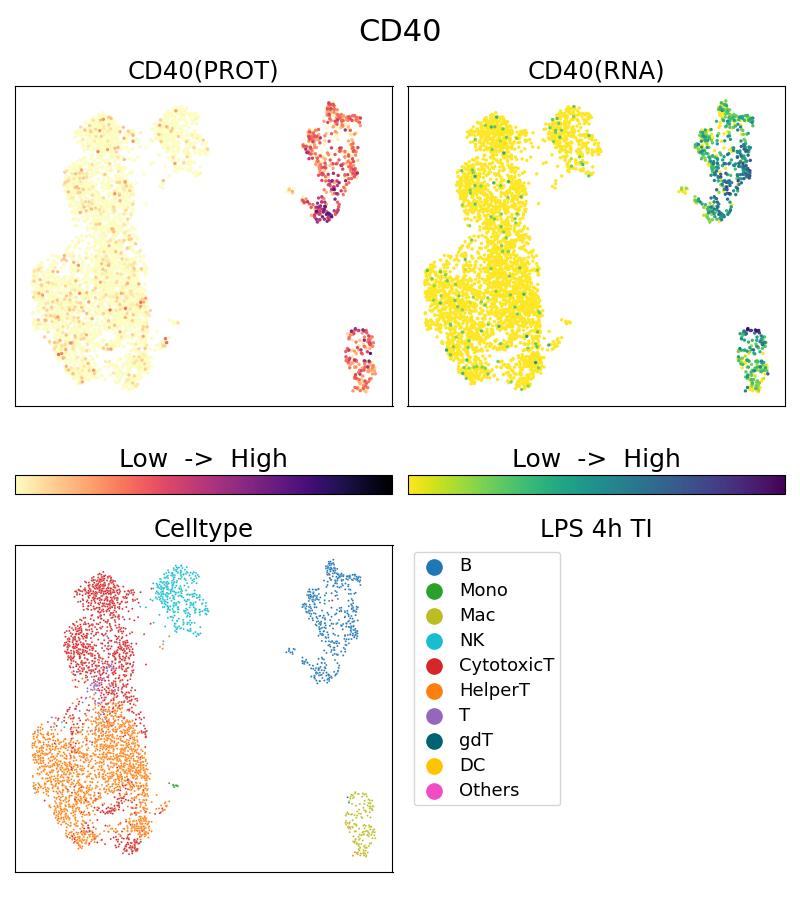验证数据展示
经过测试的应用
| Positive Single Cell (Intra) detected in | 10x Genomics Gene Expression Flex with Feature Barcodes and Multiplexing product. |
推荐稀释比
| 应用 | 推荐稀释比 |
|---|---|
| SINGLE CELL (INTRA) | <0.5ug/test |
| It is recommended that this reagent should be titrated in each testing system to obtain optimal results. | |
产品信息
G65103-1-5C targets CD40 in Single Cell (Intra) applications and shows reactivity with Human samples.
| 经测试应用 | Single Cell (Intra) Application Description |
| 经测试反应性 | Human |
| 免疫原 | N/A 种属同源性预测 |
| 宿主/亚型 | Mouse / IgG1, kappa |
| 抗体类别 | Oligo Conjugate |
| 产品类型 | Monoclonal |
| 全称 | MultiPro® 5CFLX Anti-Human CD40 (G28.5) |
| 别名 | B cell surface antigen CD40, Bp50, CD40, CD40L receptor, CDW40, p50, TNFRSF5 |
| 计算分子量 | 277 aa, 31 kDa |
| GenBank蛋白编号 | BC012419 |
| 基因名称 | CD40 |
| Gene ID (NCBI) | 958 |
| ENSEMBL Gene ID | ENSG00000101017 |
| RRID | AB_3673913 |
| 偶联类型 | 5CFLX |
| 完整寡核苷酸序列 | CGGAGATGTGTATAAGAGACAGATTGCTATGACGTACCCCATATAAGAAA |
| 条形码序列 | ATTGCTATGACGTAC |
| 形式 | Liquid |
| 储存缓冲液 | PBS with 1mM EDTA and 0.09% sodium azide |
| 储存条件 | 2-8°C Stable for one year after shipment. |
背景介绍
CD40, also named as TNFRSF5 and Bp50, is a type I transmembrane protein that belongs to the tumor necrosis factor-R (TNF-R) family (PMID: 10647992). CD40 is expressed on B cells, dendritic cells (DCs), monocytes, platelets, and macrophages as well as by non-hematopoietic cells such as myofibroblasts, fibroblasts, epithelial, and endothelial cells (PMID: 19426221). It is a receptor for TNFSF5/CD40LG. CD40L/CD40 interactions are essential for immunoglobulin (Ig) isotype switching, germinal center formation and the development of B cell memory (PMID: 7516405; 11675497).
Protocols
| Our current MultiPro staining protocol for the cocktail | Download protocol |
| 10x Genomics CG000149_Demonstrated Protocol CellSurface Protein Labeling_Rev D.pdf | Download protocol |

